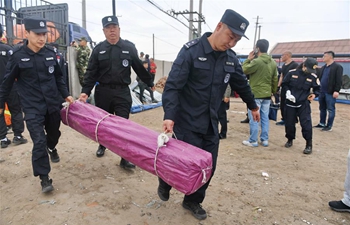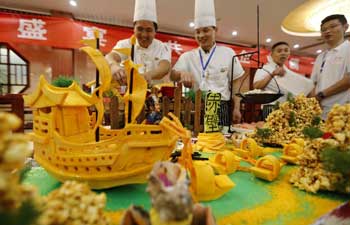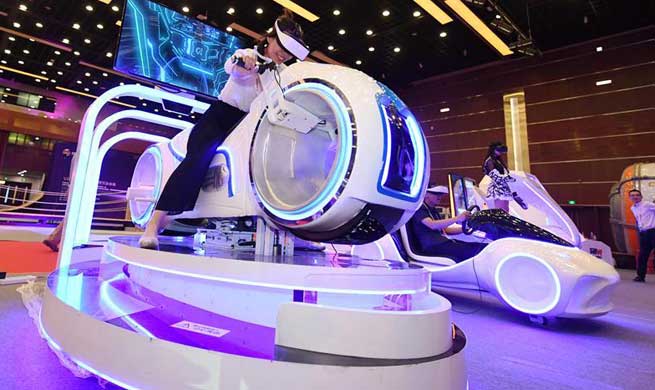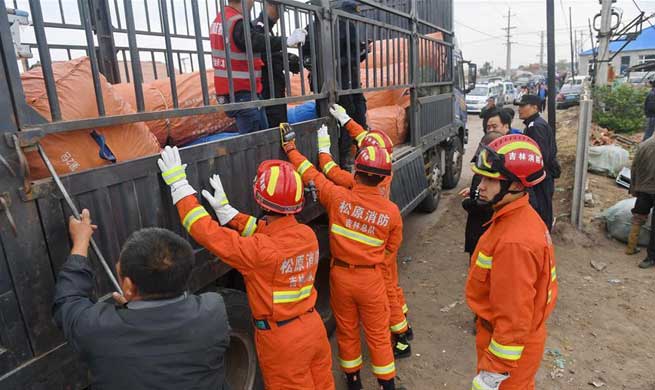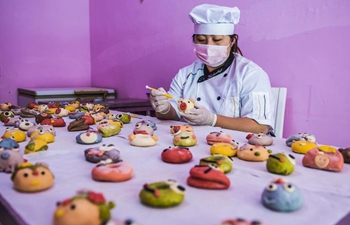WUHAN, May 28 (Xinhua) -- In China, where spicy crayfish is a much loved snack on hot summer nights, doubts have been raised about the safety of the crustaceans: Are they raised in gutters? Do they eat unclean food?
Fisheries scientists have frequently refuted the claims, saying that crayfish sold in markets are raised in clean water on clean food sources. However, cautious diners still fear they might buy an exception, since wild crayfish, which are highly adaptable, are often seen living in gutters in the countryside.
Hubei Province's Qianjiang, known as China's "hometown of crayfish," hopes to dispel the concerns by promoting "ID cards" for live crayfish.
By scanning a QR code on a carton of crayfish, the buyer can learn information about the animals inside, such as where they were raised, where they were bred, and even details about their food.
The measure is part of Qianjiang's efforts to build a quality traceability system for crayfish. The city produces one-tenth of China's crayfish.
China is the world's largest crayfish producer, according to a 2017 report by the then Ministry of Agriculture, now known as the Ministry of Agriculture and Rural Affairs. Its output skyrocketed to 852,300 tonnes in 2016 from 265,500 tonnes in 2007.
Outside the domestic market, Chinese crayfish have found fans in the United States and Europe. In 2016, China exported 23,300 tonnes of crayfish worth 259 million U.S. dollars. Nearly 40 percent went to the United States, while 90 percent of the crayfish consumed in Europe came from China.
In addition to the "ID cards," Qianjiang is also working to build an online quality monitoring system.
"We previously raised crayfish based on experience, but now we are also turning to technology," said Dong Guangwen, who manages a 667-hectare breeding base in Qianjiang's Zhaonao Village.
"For example, you should add water to the ponds at four in the morning, or the crayfish can die due to lack of oxygen," said Dong, pointing at a dynamic graph on the screen.
The system can also be used to monitor use of crayfish's food sources in real time.
In addition, Qianjiang set up a quality testing center in 2016, which enables rapid and precise tests of all freshwater aquatic life, mainly crayfish.
"In the past, if we needed to check the water quality in the crayfish ponds or how much pesticide residue was in their bodies, it took three to four days to take samples, test them, and get results. But now it takes only three to four hours, thanks to advanced equipment," said Li Jiawen with the center.
Qianjiang is also cooperating with SF Express, with an aim to deliver live crayfish to more than 300 domestic cities within 48 hours of an order being made, said Chen Jianlian, an executive with the courier.
"Freshness will be a big selling point for Qianjiang crayfish in the future," Chen said.





